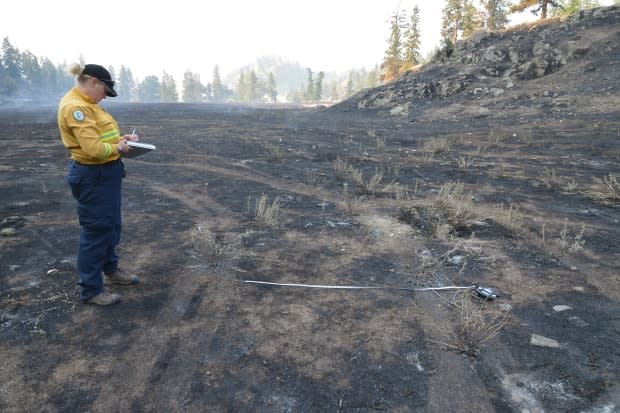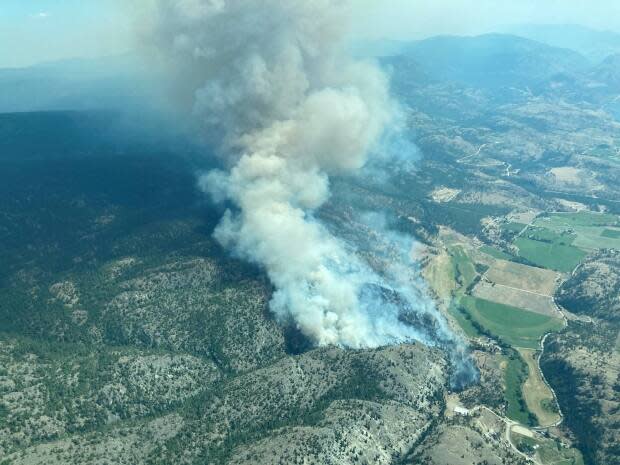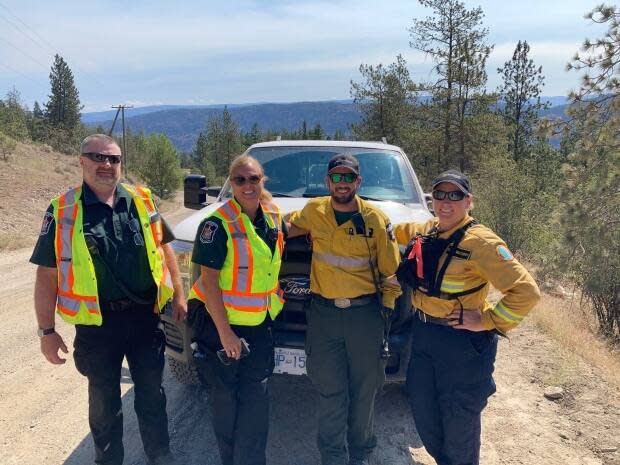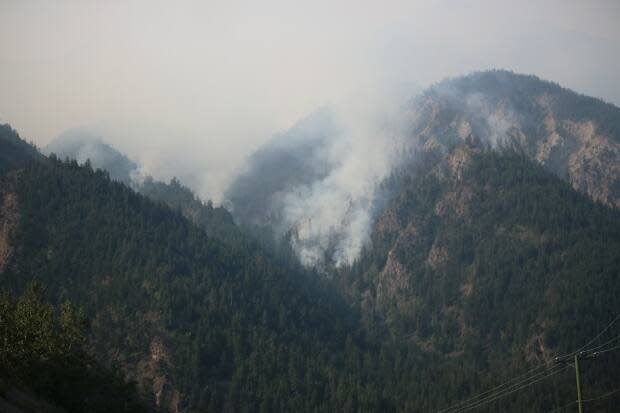N.S. fire investigator reflects on 'scary' experience in B.C. wildfires

A fire investigator from Nova Scotia returned from British Columbia this week, describing how thick smoke filled the air and ashes would drop from the sky as she helped probe the cause of several wildfires that have ravaged the western province.
Kara McCurdy, a wildfire prevention officer with the Department of Lands and Forestry, left for B.C. on July 10.
"It was scary, actually. When I first landed, I'll be honest, I was scared," McCurdy said Wednesday. "I didn't know what I was up against. We've never investigated a fire to that scale as to what B.C. would have."
British Columbia has had a worse-than-usual wildfire season, and has already responded to double the average annual number of wildfires only halfway into season.

As of Wednesday, there are 253 active wildfires still burning in B.C. In comparison, Nova Scotia has only had 110 fires this year, below the annual average.
McCurdy, who has worked for Lands and Forestry for 28 years, is the only Nova Scotian who was called to help with the fires in B.C. She was stationed in the Kamloops region, which has 81 active fires as of Thursday.
"When I arrived in Kamloops on Day 1, immediately out of the aircraft, you could smell the smoke. It was really thick," she said.
"Some days we would have supper and we'd be sitting out on the patio and there would be ashes raining down on you as you're eating."
'Travelling roadshow'
McCurdy said this is the first time Nova Scotia has ever sent an investigator to another province. Her role was to assist the lead investigator to determine the cause of the fires.
"Basically, we were a travelling roadshow," she said. "We had our own pickup trucks and as requests came in to investigate fires, which were primarily human-caused, we would head out and we would gather information along the way."
She said the team would arrive on the scene after the fire had been extinguished but while the ground was still hot.
The team would then collect data about fuel types, weather conditions and any other factors, like nearby campsites or power lines, that could pinpoint the origin of the fire. They also took photos, gathered information from people in the area and collected documents about land ownership.
That information was used to potentially determine the cause of the fire.

McCurdy said usually fire investigators are called in to examine new active fires, but that was impossible due to the number that were burning in the area. Often they only arrived on scene well after firefighters were gone, making determining the cause harder.
She said during her two weeks there, she investigated about 10 fires and some were marked as undetermined. The cause of others was determined, but McCurdy said she couldn't discuss the cases because the information could go to court.

McCurdy returned to Nova Scotia on Sunday.
She said while in B.C. she had to adjust to unfamiliar fire patterns caused by dry landscape, large mature trees, mountains and canyons that aren't found in Nova Scotia.
She said she's going to use this new knowledge to improve the training program in Nova Scotia. She also hopes to implement some of the documentation processes that were used.
"To help the other province was great and it was good to get more experience for us back home here to enhance our own program," she said.
"It'll help our prevention program in the end to reduce fire numbers."
MORE TOP STORIES

